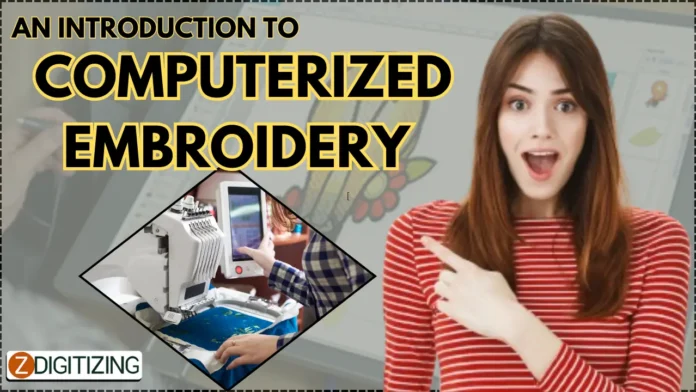Computerized embroidery has revolutionized the way intricate designs and patterns are stitched onto fabrics, offering precision, efficiency, and versatility. In this article, we will delve into the world of computerized embroidery, exploring its significance, process, and key components, including digitizing services and embroidery file format converters.
Understanding Computerized Embroidery
Computerized embroidery, also known as digital embroidery, involves the use of computerized machines to stitch designs onto fabric automatically. Unlike traditional hand embroidery, which relies on manual stitching techniques, computerized embroidery utilizes digital files and specialized software to control the stitching process with precision and accuracy.
The Importance of Digitizing Services
At the heart of computerized embroidery lies digitizing services, a crucial step in translating design concepts into machine-readable embroidery files. Digitizing involves converting artwork, logos, or images into stitch files, specifying stitch types, densities, and sequencing. Skilled digitizers use specialized software to create optimized embroidery files, ensuring the fidelity and quality of the final stitch-out.
The Role of Embroidery File Format Converters
Embroidery file formats vary depending on the software and machine used for embroidery. To ensure compatibility and versatility, embroidery file format converters are essential tools for converting between different file types. These converters facilitate seamless communication between designers, digitizers, and production teams, allowing for efficient workflow and collaboration.
The Process of Computerized Embroidery
The process of computerized embroidery typically involves the following steps:
- Design Creation: Designers create or select artwork, logos, or images to be embroidered onto fabric.
- Digitizing: Skilled digitizers convert the design into a machine-readable embroidery file, specifying stitch types, densities, and colors.
- Machine Setup: The embroidery machine is prepared, including selecting appropriate threads, stabilizers, and hooping the fabric.
- Stitching: The digitized design is loaded into the embroidery machine, which then automatically stitches the design onto the fabric according to the programmed instructions.
- Finishing: Once the embroidery is complete, any excess threads are trimmed, and the fabric is inspected for quality.
Advantages of Computerized Embroidery
Computerized embroidery offers several advantages over traditional hand embroidery, including:
- Precision: Computerized machines can replicate intricate designs with high precision and accuracy.
- Efficiency: Automated stitching reduces production time and labor costs compared to manual embroidery techniques.
- Versatility: Digital files can be easily edited, resized, and replicated, offering flexibility in design customization.
- Consistency: Computerized embroidery ensures consistent stitch quality and pattern replication across multiple items.
Applications of Computerized Embroidery
Computerized embroidery finds applications across various industries and sectors, including:
- Fashion and Apparel: Embroidered logos, designs, and embellishments on garments, accessories, and footwear.
- Home Decor: Decorative embroidery on curtains, cushions, bed linens, and upholstery.
- Promotional Products: Branded merchandise, corporate gifts, and promotional items featuring embroidered logos or slogans.
- Automotive: Embroidered emblems, seat covers, and interior accents in automotive upholstery.
- Sports and Recreation: Team uniforms, jerseys, and merchandise featuring embroidered logos and designs.
Conclusion
Computerized embroidery has transformed the way intricate designs and patterns are stitched onto fabrics, offering precision, efficiency, and versatility. With the help of digitizing services and embroidery file format converter, designers can bring their creative visions to life with ease. Whether in fashion, home decor, or promotional products, computerized embroidery continues to play a significant role in enhancing aesthetics and branding.





